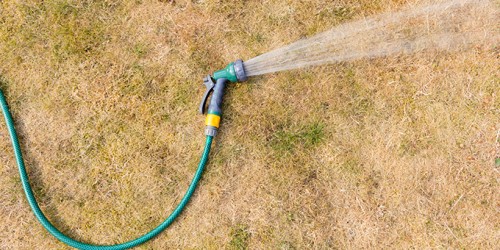Guide to Lawn Care

Who doesn’t want a flourishing emerald green lawn to make them the envy of their neighbours? No matter your gardening experience, we’ve put together the ultimate guide to lawn care to show you how to achieve the flawless lawn of your dreams.
Why should you mow your lawn?

Your lawn will grow at different rates throughout the year depending on the temperature, but it’s important to always remember to mow it regularly during spring and summer. Why? A lawn that’s mowed regularly will be encouraged to grow fuller and spread its roots through the soil which will prevent those unwanted pesky weeds from taking root.
When the grass starts to grow around springtime, cut your grass at least once a week. Ensure you raise the height of the mower’s blades at the start of your mowing season and gradually lower them throughout the next few weeks. At the end of the summer you should be cutting at a height of roughly 2½ cm. If in doubt, leave the grass longer rather than shorter.
The rate at which your grass grows will start to slow as winter approaches. Heighten the blades of your lawnmower throughout autumn, cutting your lawn as little as possible. You should avoid mowing it during winter, as cutting frosty grass damages the grass blades.
When should you mow?

Before you start to mow your lawn, check your mower blades. To get a proper cut you’ll want them to be as sharp as possible – dull or blunt blades will damage the turf, leaving frayed grass that looks more brown than green. Your lawnmower blades will need replacing when the grass appears frayed or shredded after you’ve mowed it; sharpen or replace mower blades when they show sign of wear.
Make sure to mow your lawn while it’s dry; the mower will find it harder to pick up wet grass clippings resulting in messy clumps all over your lawn when you’ve finished. Go over the edges of your lawn edges with a sharp pair of gardening shears to tidy it up – to give your lawn more of a defined edge, install lawn edging along the borders.
During warmer weather, it’s best to leave your grass longer. Cutting it during periods of drought cause your grass distress, and may stop it from growing. Longer grass will be less likely to fall victim to drought as it will trap moisture better. If your lawn is on the shadier side, it will benefit from longer grass too, as this makes it less susceptible to things like bare patches and moss.
Growing a new lawn
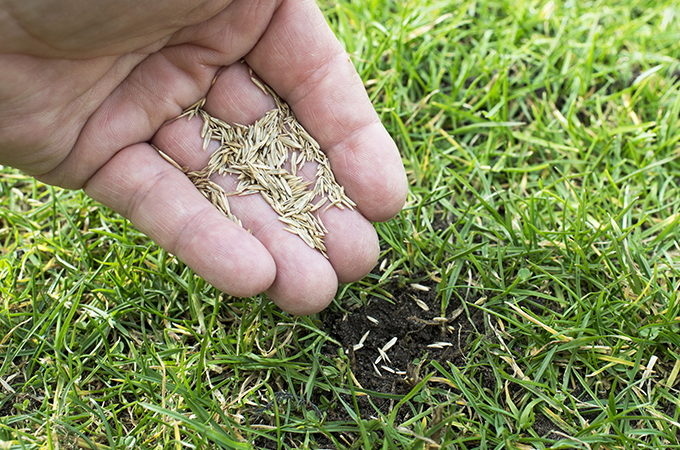
Does your lawn look sad and tired, or just generally worse for wear? There are plenty of things you can do to rejuvenate it. To cover up bare patches or encourage a new lawn to grow, you can either sow grass from seed, or lay down fresh turf.
Grass seed is the more cost effective option, but it will take time to grow – lay cool-season grasses in the autumn time, and warm-season grasses in springtime. Turf may be the more expensive option, but it will give you an instant lawn. Both options will need a thorough watering to ensure the turf ‘takes’ or that the seed germinates.
The type of soil you have in your garden will be key to determining what kind of care your lawn will need. Loamy soils are ideal as this retains the all important nutrients to help your grass grow; sandy soils will have no issue with drainage, but will have difficulty retaining nutrients, and will require more frequent watering and fertilisation; clay soils will be able to retain nutrients, but over time they can become compacted, causing drainage issues.
Watering and fertiliser
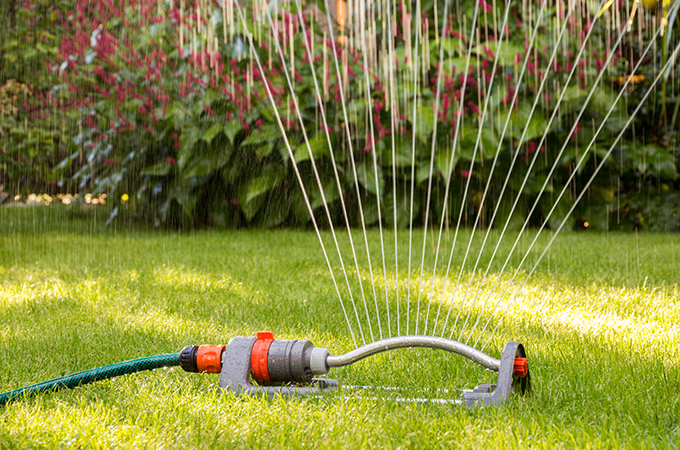
To make sure you’re giving your grass the best possible chance to flourish, it will need regular watering and even occasionally a good feeding with fertiliser. A light drizzle with the hose won’t be enough – you’ll need to give it a good soaking.
Try and water your lawn in the mornings, as this will give it a chance to dry off throughout the day. Nighttime watering means that it stay wetter for longer, and encourages unwanted diseases. By giving it a good soak you’ll be allowing all that key moisture to permeate the soil properly. You should water less frequently, but for a longer amount of time.
You can tell your lawn needs a good soaking when the edges of the grass blades curl and wilt, and the lawn takes on a blue-greyish tint. Don’t worry if you’re in an area with a hosepipe ban, as your grass should bounce back to its usual vivacity when the rain returns.
Aim to fertilise your lawn at least twice a year; once in the springtime when it first starts to grow, and again around midsummer. A dormant lawn won’t absorb any nutrients, so avoid fertilising it in periods of hot weather. Try to fertilise it before you water it, as the water will help the key nutrients drain down into the roots, rather than burn the grass blades.
Aeration
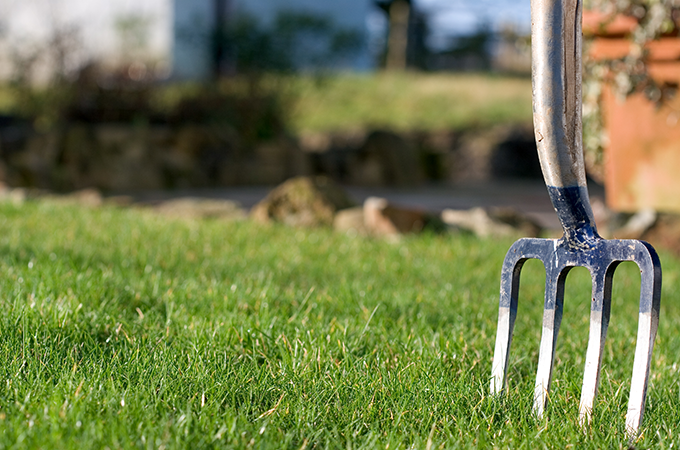
Clay soils can be trickier than loamy or sandy soils. This is because the more time you and your family spends on the lawn, over time it can become compacted, which causes drainage issues. Not only will this deprive your lawn of its much-needed drink, it means the roots don’t have the proper oxygen they need to thrive.
There’s a simple fix to this which you can do with your humble pitchfork. Every 10cm or so, dig the tines gently into the soil, and wiggle the pitchfork back and forth. If your soil is especially heavy and compacted, add a little sand to the holes left by your pitchfork to help aid drainage. This should help it from becoming compacted further.
Weed control
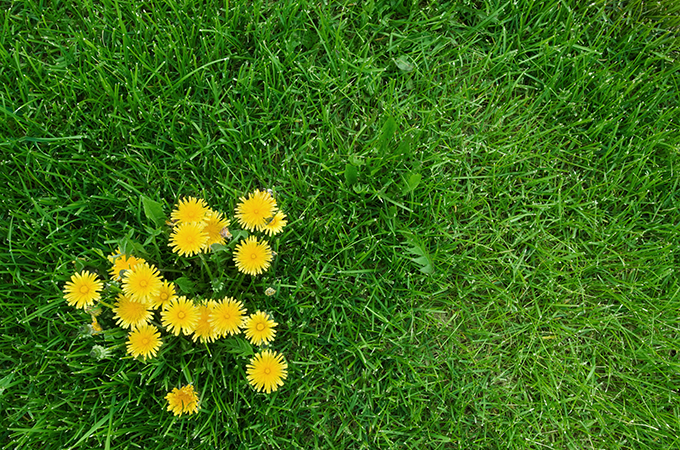
Pesky weeds can be annoyingly persistent despite your best efforts. The ideal way to tackle them is to try and deal with them as soon as you notice them. Most of this type of weeding you can do by hand; try to remove as much of the root as possible to prevent the weeds making a comeback. It will be much easier to deal with the smaller weed than when it’s established itself in your lawn.
It’s also a good idea to scarify your lawn occasionally with a rake or scarifier, as this will help to prevent a build up of moss or other smaller weeds. It’s important to remove any build up of decaying leafy matter too, as this will encourage moisture and potentially diseases in your lawn. This also deprives grass of vital sunshine, which is guaranteed to undo all of your hardwork. A leafblower or vac should help to solve any accumulation of leaves.
Animals

Moles are the scourge of the proud lawn owner, leaving mounds of earth dotted throughout your sea of green. They can be difficult to deter, but our range of mole repellers should help you to do so in a humane way. If you want more natural ways to rid your lawn of moles, mowing your lawn more frequently is the answer. By continually using your lawn for noisy activities such as allowing your children to play on it should also encourage the moles to keep away.
Not a fan of those muddy wormcasts left behind by worms? Instead of cursing those wriggly fiends, rejoice – all it means is that your lawn is healthy enough to be encouraging worms to squirm beneath the roots. This will be helping to naturally aerate your lawn – they will also be eating away at any decaying matter, too, and giving your lawn valuable nutrients it needs to grow healthily in exchange. If you really can’t stand those muddy wormcasts, simply wait for them to dry out and brush them away. Your lawn will thank you for leaving the worms to do their job.
We all love our dogs, but they can also have a detrimental impact on your lawn. The high nitrogen content in the urine can leave your lawn looking yellow and patchy. To combat this, either look at getting a gravelly area for your dog to do their business, or encourage them to go in one particular spot so as to limit the damage done to the rest of your lawn.
Are there any lawn care tips you think we’ve missed? Head on over to our Facebook page and let us know!
Lead image: Natalia Bodrova via Getty Images.

